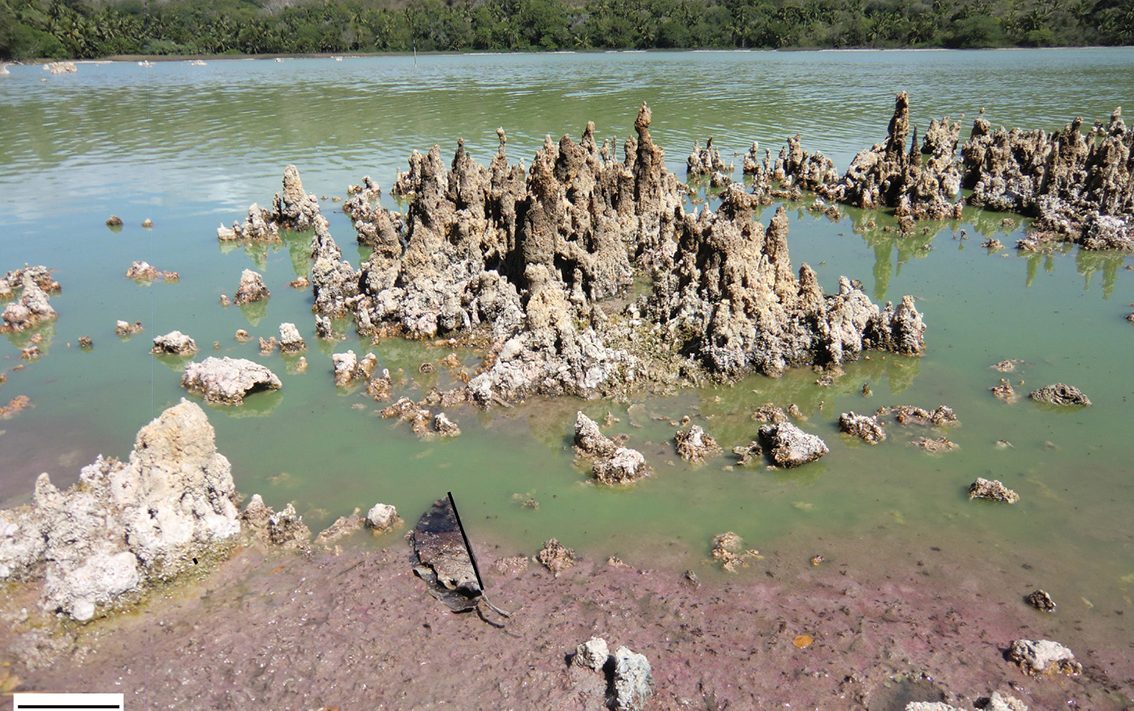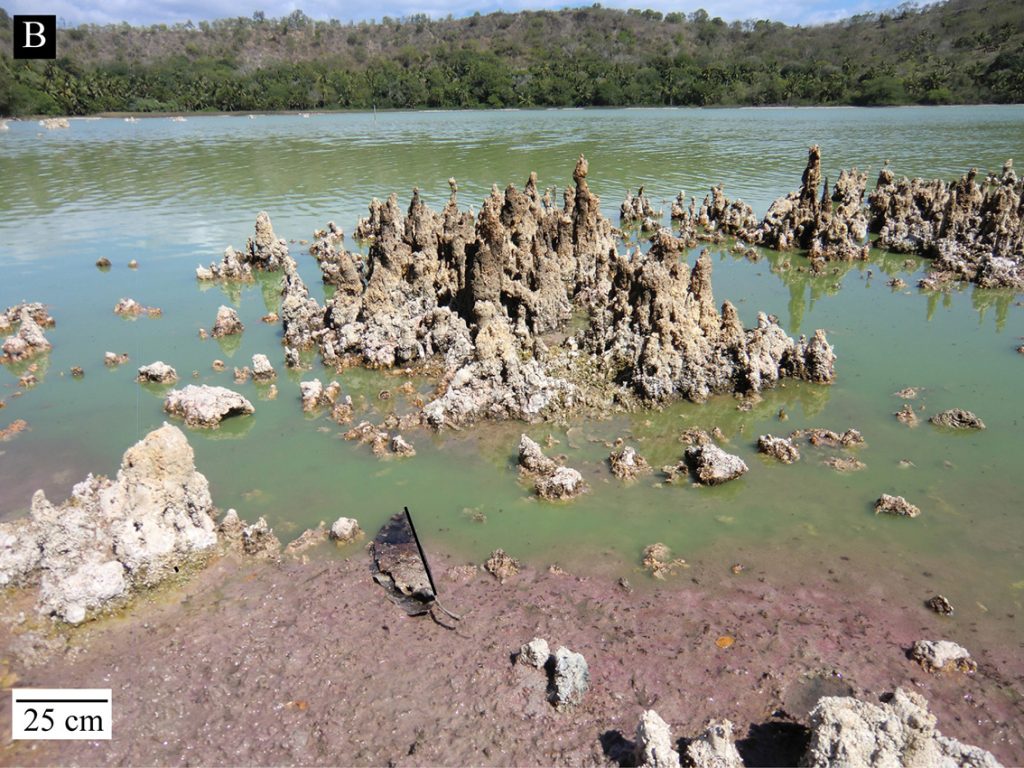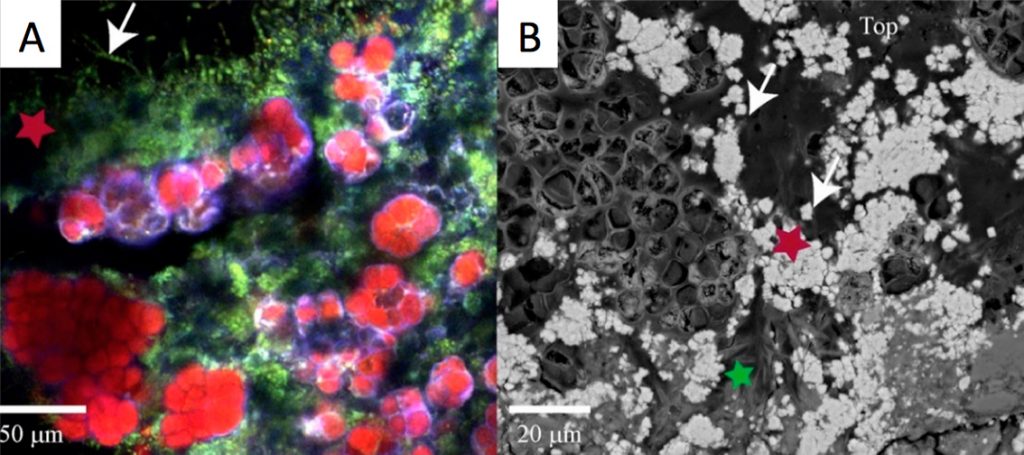Predominant role of purple bacteria in stromatolite formation in Lake Dziani Dzaha, Mayotte
Using a combination of micro-imaging and microbial ecology techniques, a multi-disciplinary team (1) has highlighted the predominant role played by phototrophic alphaproteobacteria in the formation of stromatolites in Lake Dziani Dzaha, Mayotte. The precipitation of calcium carbonates in these stromatolites seems to be essentially linked to anoxygenic photosynthesis, opening up new perspectives for the analysis of the fossil record.

Latest news









